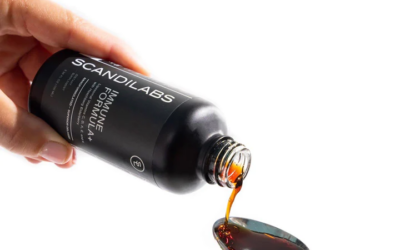Ultimate Physique Transformation Guide: Principles for Muscle Growth and Fat Loss After 30
by Eddie Mejias
Why transform my body? To some, the answer is self-evident. To others, it may not be as clear. After all, not everybody is driven by how they look at the beach, around the pool or in the mirror. To answer that question, let’s consider the desired outcomes of a physique transformation: muscular hypertrophy and fat loss. More specifically, how are these outcomes beneficial to our health?
After the age of 30-35, we gradually lose muscle tissue. This process is known as sarcopenia. It’s also referred to age-related muscle loss (ARM). This phenomenon leads to a host of daily problems: decreased stamina to perform physical tasks, slower walking speed, loss of balance/increased risk of falls and injury, and loss of metabolism.
Naturally, it should be a priority for everybody to counter ARM with muscular hypertrophy, or growth. Now, you’ll find hundreds of articles discussing how to promote muscular growth through a seemingly endless number of methods. In this clinic, I will distill muscle growth into three essentials:
- Tension
- Overload
- Recovery
- Nutrition
Tension
Some principles that I teach my clients in the gym seem like bad ideas in everyday life. In fact, they’re almost counterintuitive. One such principle is that when you’re lifting weights, you should always maximize muscular tension. Yes, tension is a good thing!
How do I use tension to my advantage in the gym? Start by assuming a solid secure stance or position for every movement. Even if you’re not directly exercising your core, you should tighten your abs for every movement, In fact, no part of your body should be loose, dangling, or unsecured. Keeping your body tight allows you lift more weight, and safeguards against injury. This is why I do not have my clients perform resistance training on unstable surfaces like bosu balls. People who need to improve their balance should perform separate movements just for that purpose. Trying to fuse balance with strength training dilutes the purposes of both.
Once you begin the movement, momentum should be kept to an absolute minimum. Momentum is the enemy of muscle growth and it can take many forms: swaying your hips and raising your shoulders during a barbell curl, raising your upper body during a barbell row, bouncing at the bottom of a chest press of toe raise. These extraneous movements make the movement easier and take tension off the targeted muscle. This results in less stimulus for muscle growth. Not good!
Another common mistake I see trainees making is ignoring or deemphasizing the eccentric portion of the rep. In other words, they don’t resist the descent of the weight and simply let gravity take over. This is a big mistake for a couple of reasons. First, actively resisting the descent of the weight produces greater amount of microdamage to the muscle than the lifting (concentric) portion. For example, in a barbell curl, if you take 2-3 full seconds to lower the bar to full extension, you will stress the biceps more than actually curling it. So, if you neglect the negative, you’re leaving a lot of muscle gains on the table.
Another reason to emphasize the negative is to eliminate what is known as the stretch-shortening cycle. When a muscle is stretched quickly, it builds kinetic energy to then immediately contract, much like a spring. This explains why it feels easier jump higher when you quickly lower into a squat position rather than from a standing-still position. However, if you slowly lower the weight (taking roughly twice as long in the negative as the positive), you somewhat negate the spring effect. Better yet, if you pause momentarily at the stretch position before contracting the muscle, you eliminate it entirely. In short, you will force the working muscle to use more force to contract rather than relying on this reflex effect. Some muscles are more prone to the reflex effect than others, most notably the gastrocnemius muscle of the calf. This is why you see so many trainees bounce off the bottom of a toe raise. They’re subconsciously doing this to make the movement easier. However, you should always stive to make the lift more difficult if you want to maximize your gains.
So, we know that reps should be performed slowly, smoothly, and with a tight and secure base. It’s also important to keep the tension on the target muscle by not exceeding or shortening the range of motion. In other words, the movement should fully extend and contract the targeted muscle, but not allow it to relax. Examples of this include slowly lowering the barbell to your chest and only pressing it to just short of lockout. When you lockout your elbows, you’re simply allowing the pectorals to relax, which is counterproductive for muscle growth. You relax the muscles between the sets, not during the sets!
Finally, this presentation would be incomplete with discussing the need to train to failure. As I said before, many words that we use in weight training have a negative connotation in other aspects of life. With weight training, training to failure is actually a positive outcome. What exactly does training to failure mean? When you’ve momentarily lost the ability to perform another rep in good form, you’ve reached muscular failure. Contrary to what many people believe, this is a distinct and safe outcome. After several weeks of consistent training, you will intuitively know when you’ve hit failure on your movements. Remember, if you’re training with the tight form we discussed earlier, reaching failure will not pose a safety risk. Training with sloppy form is what leads to injuries, not failure. In fact, at least one study has demonstrated that training to failure is the biggest contributor to muscle growth.
Overload
Once you’ve mastered maximizing muscular tension during a set, the next method of increasing the difficulty is through progressive overload. Simply put, progressive overload consists of gradually increasing the number of reps or weight that you perform for an exercise. The simplest and most reliable method of overload is increasing the total reps by at least one every workout. Once you reach the top end of a prescribed rep range (e.g. 7-10), you’ll increase the weight by 3-5%. Of course, either you or your PT will need to record your sets and reps every workout in order to accurately gauge your progress. This is why you’ll always see me on the gym floor with a clipboard and my client’s workout card. It’s simply impossible to remember your performance on every exercise. Record keeping is vital.
What happens when you hit a plateau with an exercise and can no longer increase the reps? You simply replace it with another one that targets that muscle. There are literally hundreds of movements available to you in this gym. With that said, I don’t suggest changing your workout too often, because tracking your progress becomes too difficult. Variety is important, but it is not everything.

Eddie Mejias
Certified Personal Trainer
Certified Group Fitness Instructor
Recovery
Even if you’ve training with optimal form and intensity, and you’ve been consistently overloading your muscles, you can still stall your gains if you do not learn how to recover properly. The first aspect of proper recovery is limiting the volume of your workouts. Unlike the vast majority of lifters in the gym, for the last twenty-plus years I have limited most of my exercises to simply one set to failure. A casual review of trainees in the gym, or even competitive bodybuilders, reveals that almost all of them perform 3-5 sets of every exercise without hitting failure for any of them. What is much more productive and efficient (and safe) is attacking an exercise with one set performed strictly and to failure, and then moving on to the next movement. Once you’ve exhausted your muscle fibers with one all-out set, another set of the same movement will not add any benefit. In fact, it will cut into your all-important recovery. Another advantage of low-volume, high-intensity training is that you do not have to pace yourself by leaving a couple of reps in the tank. This is what inevitably happens when you perform multiple sets of multiples exercises. You should view your short weight-training session more as a sprint than a long-distance race. Emphasize quality over quantity.
How often should you train? On this topic, I’ve evolved a bit over the last few years. Until about three years ago, I trained every muscle group except calves just once per week. I made decent gains with that approach, and so will most trainees. However, for intermediate and advanced lifters, I have found that targeting muscles twice or even three times per week produces more accelerated gains. Why? Well, several studies have confirmed that the repair of intensely trained muscle fibers (assuming proper nutrition and) takes only 48-72 hours. For a long time. I had been overestimated the amount of recovery time. By doing so, I was missing opportunities to stimulate growth. While my muscles were not atrophying from infrequent training, I was stimulating growth only once per week rather than twice per week. In January 2020, I began training chest, shoulders, back, biceps and triceps twice per week. Within 2-3 weeks, I noticed growth in those areas that I had not seen in years. Even other gym members commented on this uptick in growth. I continue to train those muscle twice per week, while still leaving two days (Wednesday and Sunday) as rest days. I still only train quads and hamstrings once per week, and calves three times per week for reasons that I will discuss at another clinic.
Nutrition
Now, we will discuss the topic that probably drew many of you to you this clinic: Nutrition. Your focus with nutrition should be how to maintain your muscle mass while losing body fat at a sustainable rate. Keep in mind that at most, the body can only lose 1.5-2 pounds of fat per week. Exceeding that rate of weight loss surely means that you are also losing muscle, which is counterproductive for several reasons. First, losing muscle tissue will reduce your resting metabolic rate, which will make losing fat even more difficult, Second, you will lose strength as you lose muscle. Finally, your body will continue to look soft and flabby if you lose muscle along with fat.
What are the best ways to lose bodyfat and maintain muscle? First, you must consume fewer daily calories than you burn. A workable formula for this is to multiply your bodyweight by 15. That total represents your maintenance caloric intake-when the calories consumed roughly equals what you burn. If you’re beginning a cutting phase (a 3-4 month period of losing bodyfat), I suggest you being by consuming about .85 of your maintenance daily caloric intake. This 15% reduction will be just enough to make a difference in the beginning without forcing your body to break down muscle tissue.
After 3-4 weeks of consuming calories at that level, take down the caloric intake to about 80%. Finally, after 6-8 weeks, reduce your daily caloric intake to 75% of maintenance level. This will be the last phase of the cutting cycle, and it will last another 3-4 weeks.
Of course, the ratio of macronutrients in your daily nutrition heavily impacts the results on your body. First and foremost, set your protein intake at about 1.0 grams per lb. of bodyweight and keep it there for the duration of the cycle. Do not ever cut your protein intake to meet the caloric restrictions. While you never want to completely eliminate carbohydrates, they will be gradually reduced as you proceed through your cycle. Remember that 1 gram of carbs equals 4 calories. Thus, by eliminating 50 grams of carbohydrates, you’ve stripped away 200 calories, which is significant.
You may be wondering when you should eat your carbs. Because your glycogen stores are depleted after you wake up and after an intense weight-training workout, these should be the two meals you consume most of your “starchy” carbs like rice, potatoes, and whole-wheat bread. Your body will not store excess carbs as fat since the carbs will be shuttled to your muscle tissue. However, a few trace carbohydrates from fibrous sources (i.e., vegetables), are acceptable throughout the day, since the fiber “cancels out” the carbs.
Regarding fats, I recommend that you focus primarily on unsaturated fats, and minimize saturated fats. This means avoiding fatty meats, and sticking to poultry, fish, turkey even bison meat for your protein. With that said, eating whole eggs is still recommended since the benefit of the numerous vitamins in the yolk outweigh the health risk of the fats. Furthermore, numerous studies have debunked the notion that egg consumption leads to higher LDL cholesterol levels.
The frequency of the meals is also significant. Ideally, one should consume about 5 protein-rich meals per day, with each meal about 3-3.5 hours apart. This frequent feeding of protein keeps your metabolism high, and prevents avoids huge jumps in your insulin levels. Of course, these meals should contain moderate I. portions or else you will not feel like eating again in three hours. A protein/carb post-workout shake can substitute for one of the meals.
I’ll include one more tip that is easily implemented. When you’re consuming your balanced, whole-food meals, finish the protein portion first, then the fiber (or vegetables) part, and finish with the starchy carbohydrates. The consumed protein and fiber will substantially blunt the insulin release that follows the carbohydrate consumption. Large insulin spikes inevitably lead to fat storage. This simple strategy solves that problem.
Related Articles
Unlocking the Power of Liposomes for Enhanced Vitamin Delivery
The world of nutrition and health is always evolving, and one of the latest breakthroughs in this field is the use of liposomes for vitamin delivery. These tiny lipid structures, often referred to as liposomal vitamins, are gaining recognition for their ability to revolutionize the way our bodies absorb essential nutrients. In this article, we’ll delve into the advantages of liposomes for delivering vitamins, shedding light on how they can optimize your overall well-being.
Stuff We Love: 2023 Holiday Gift Guide
Get ready to sleigh your fitness goals this holiday season with our 2023 gift guide, highlighting the coolest, most sweat-worthy gear and apparel we could find! 🎅🏋️♀️ Whether you’re a gym fanatic, yoga enthusiast, or just someone looking to gift that fitness-loving friend (or yourself!) something awesome, like Rudolph’s red nose guiding Santa’s sleigh, we’ll lead the way.
Improve Your Hip Mobility with Wall Hip Flexor Mobilization
Hip mobility is an essential aspect of overall health and fitness, and the Wall Hip Flexor Mobilization is an excellent exercise for improving hip mobility, reducing tightness, and preventing injuries.




